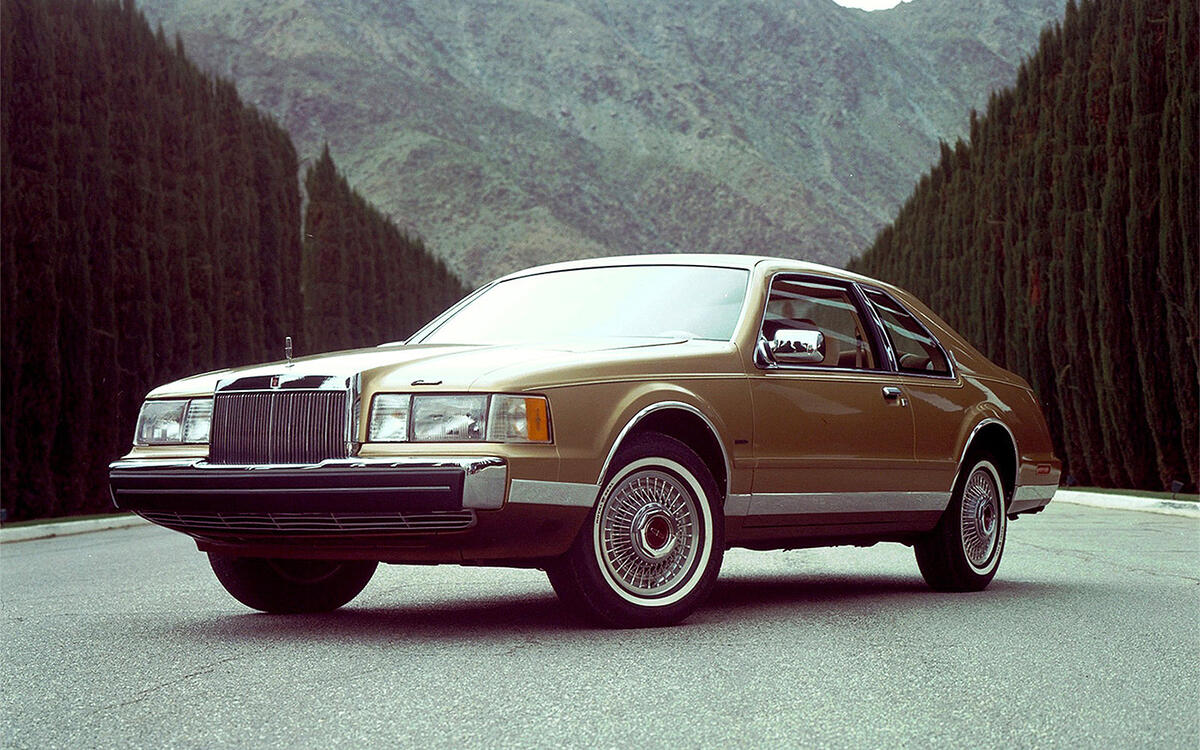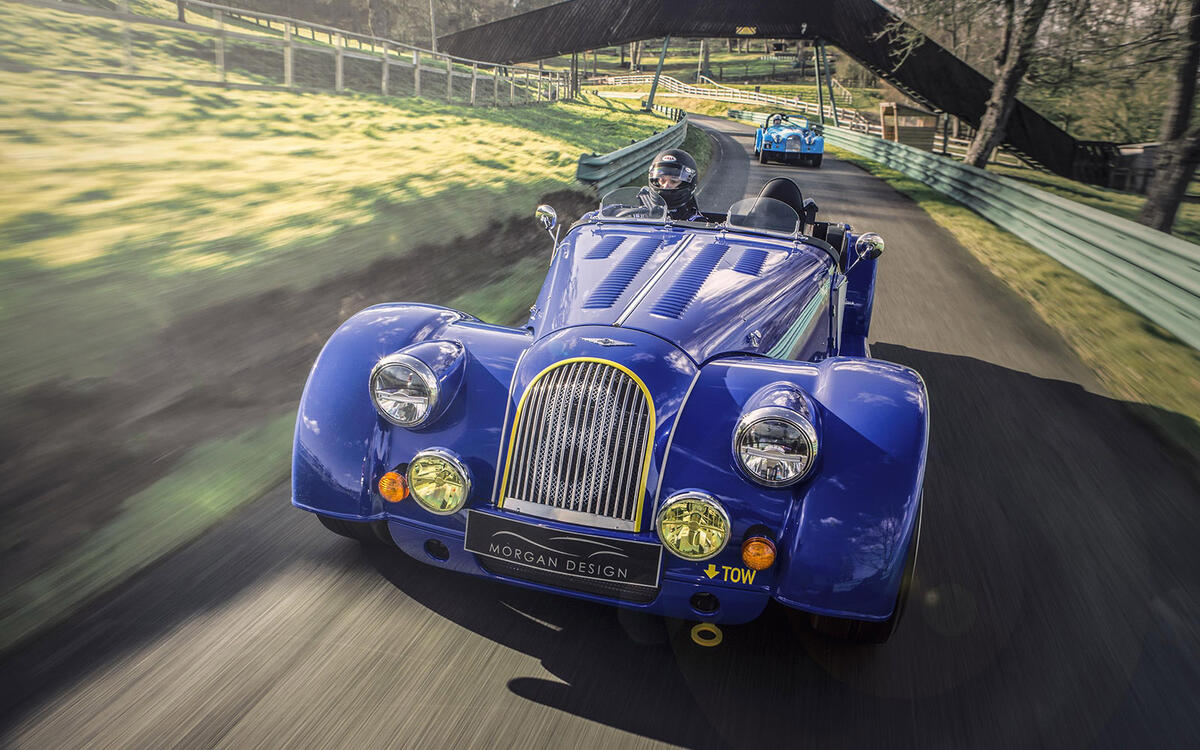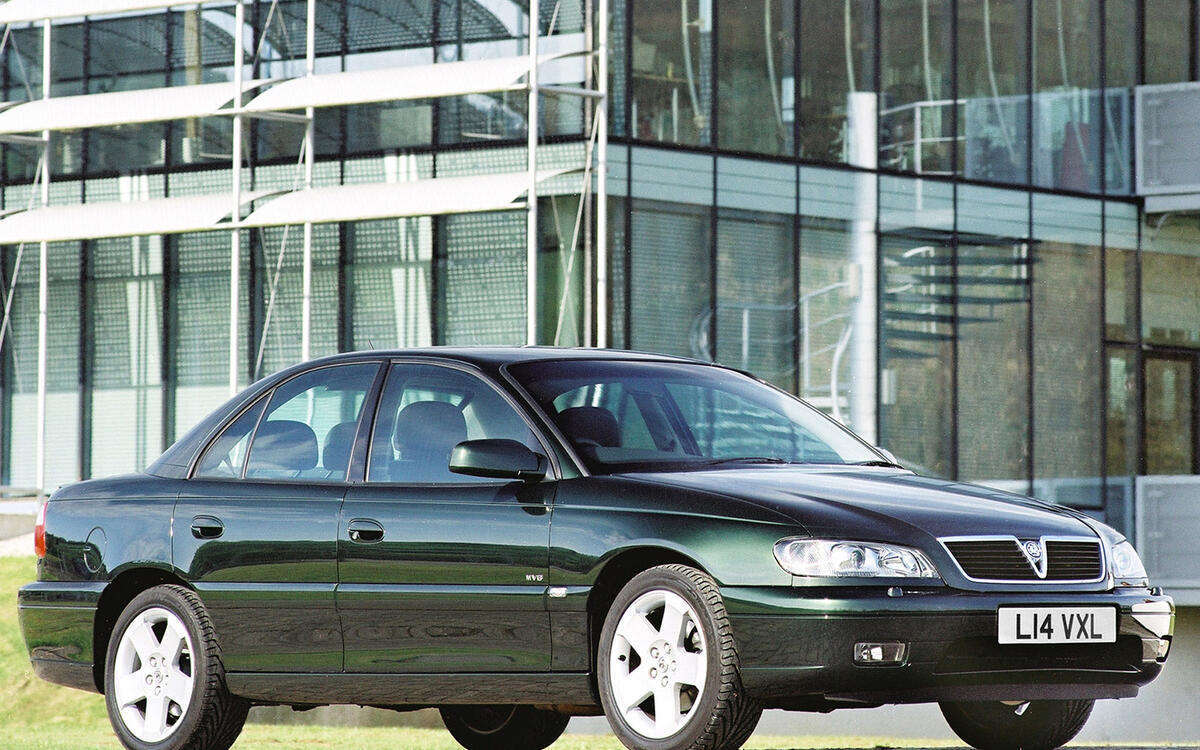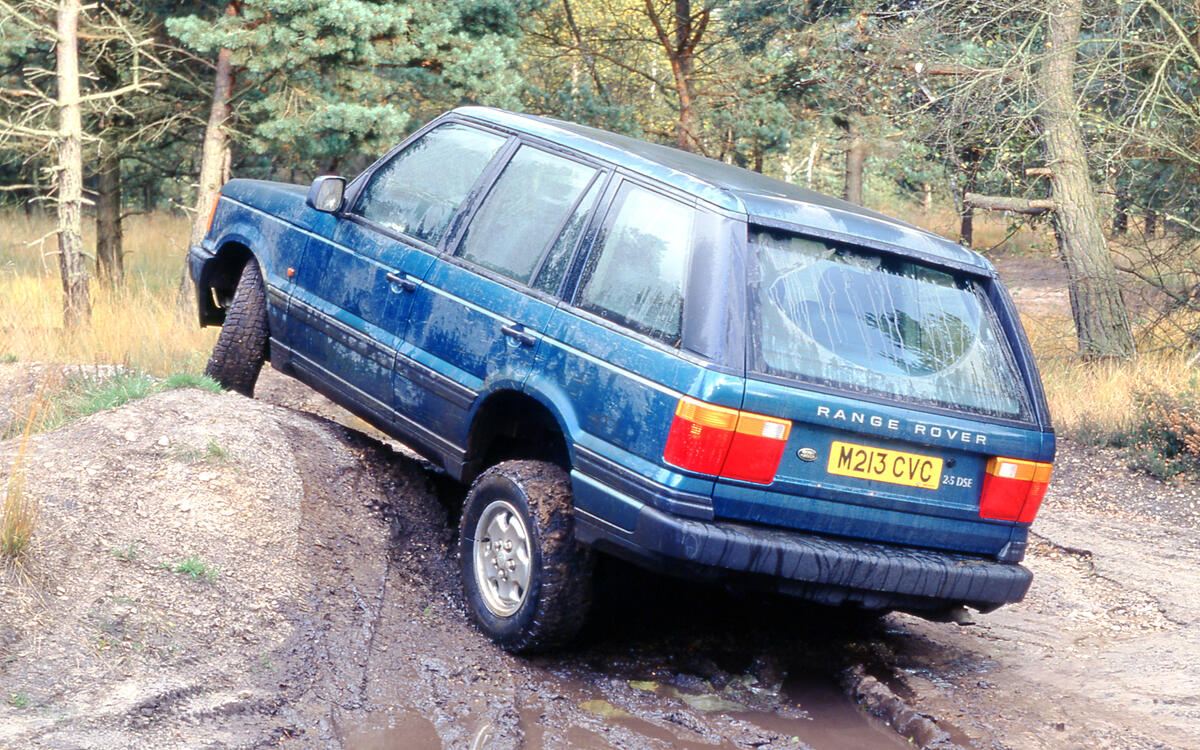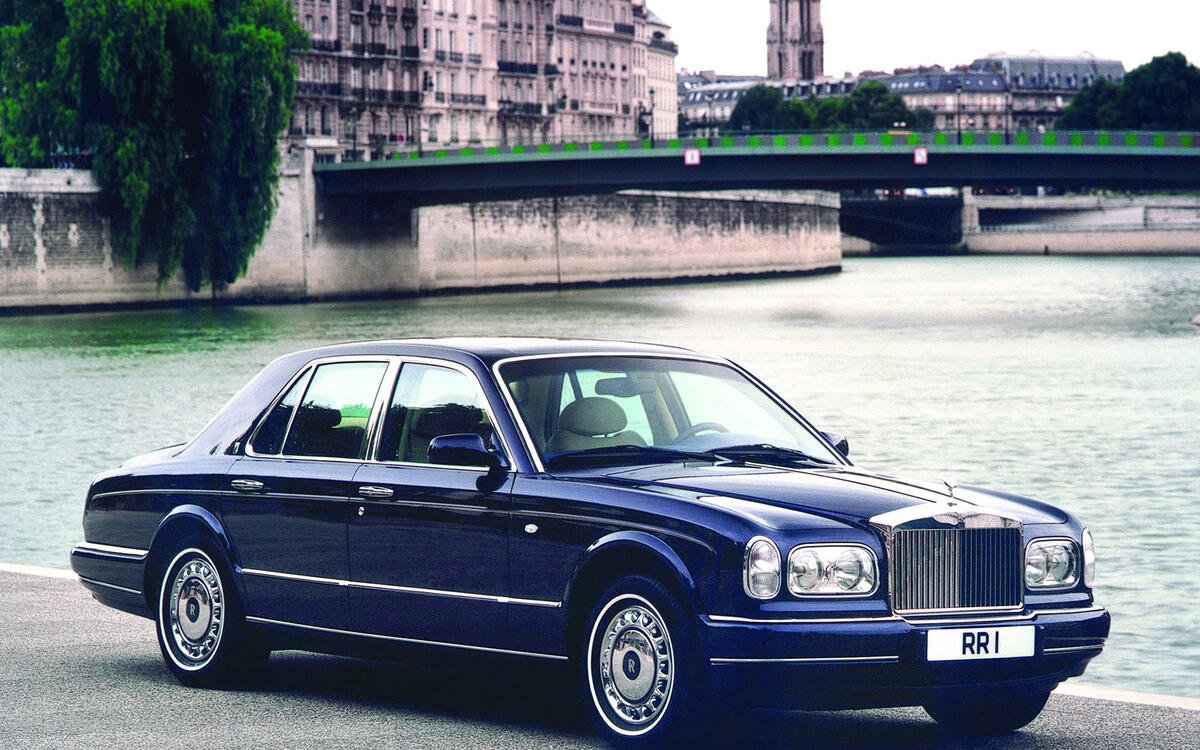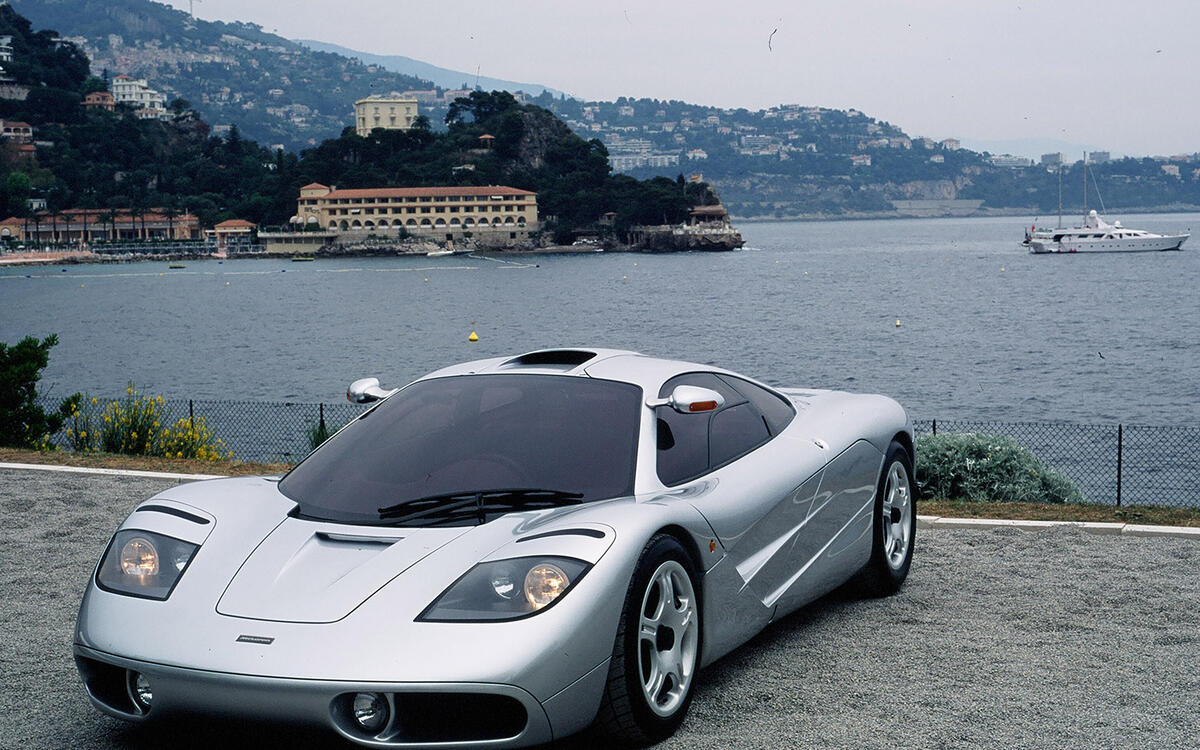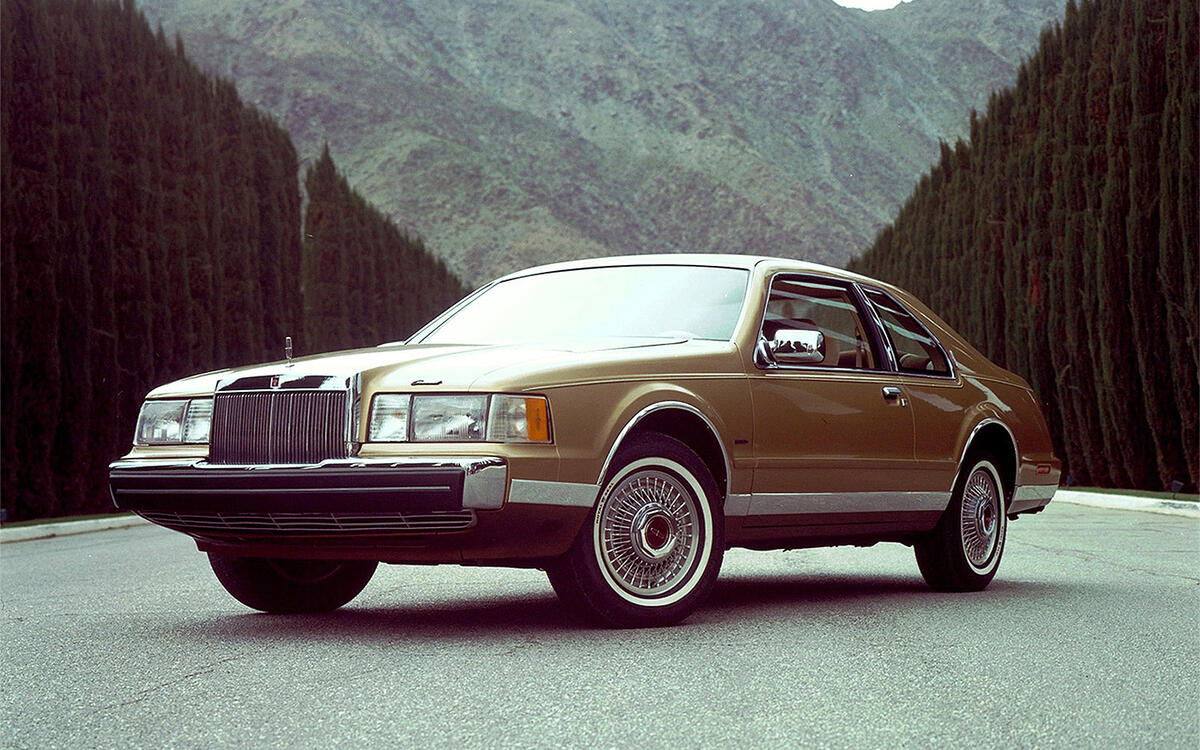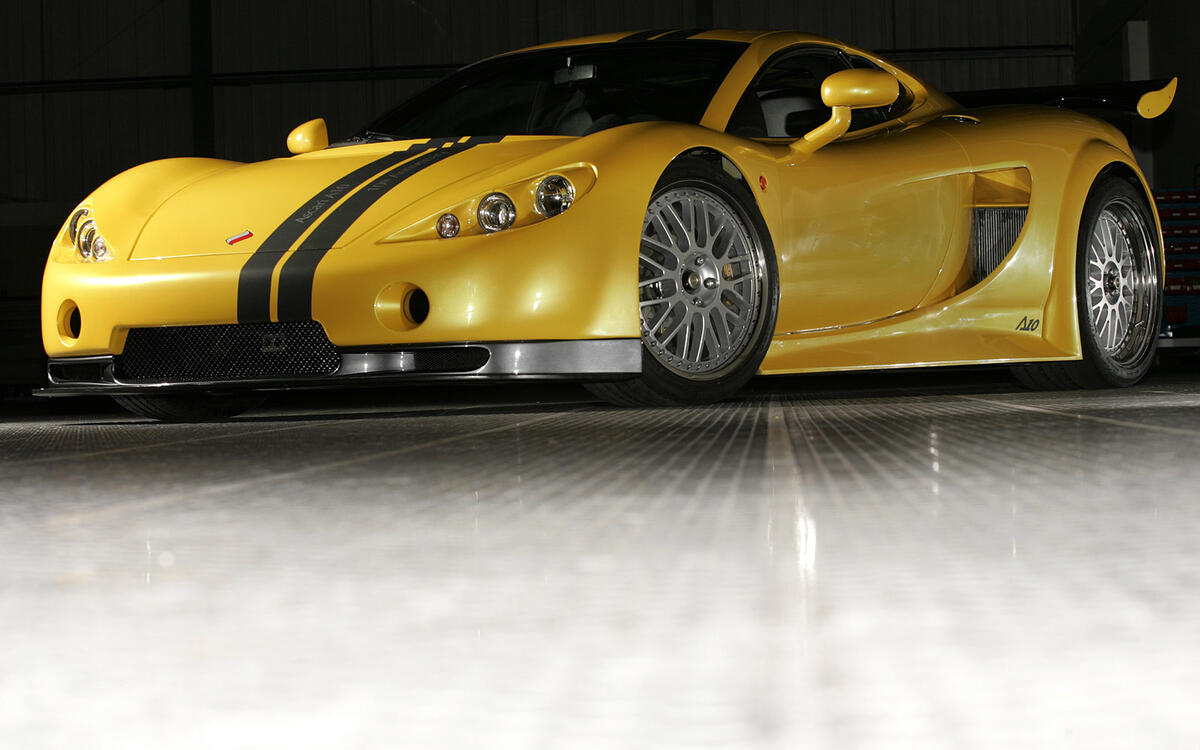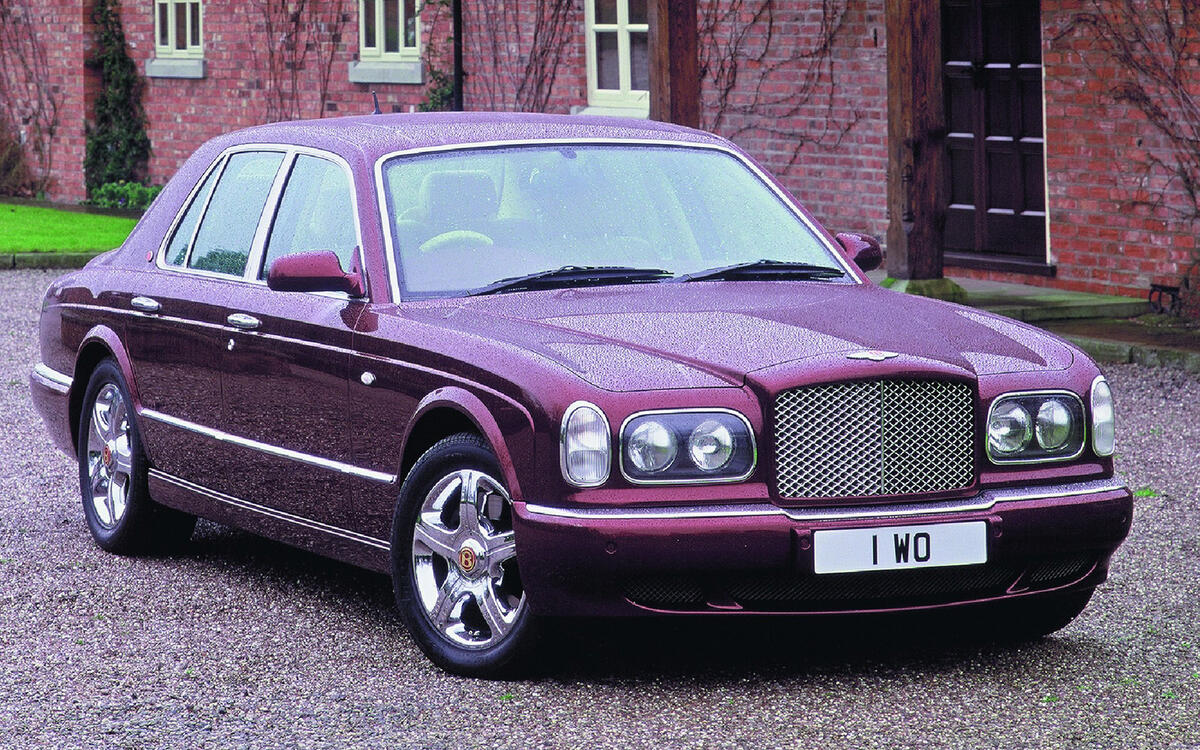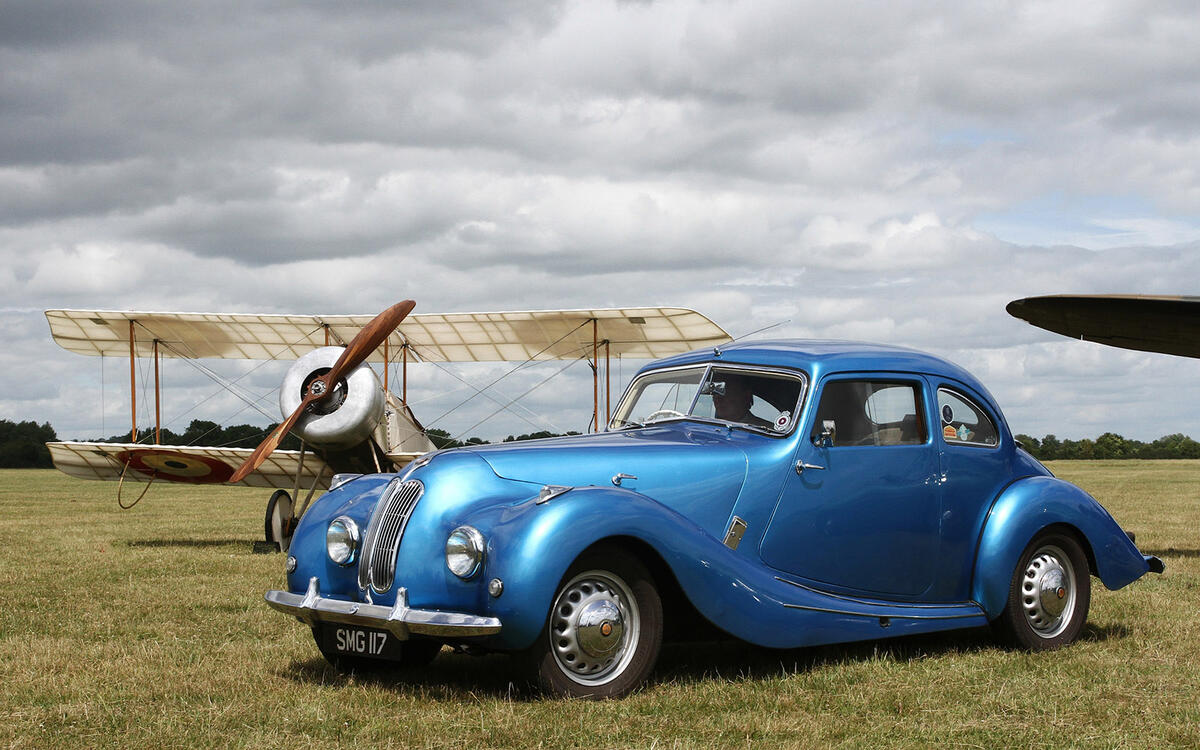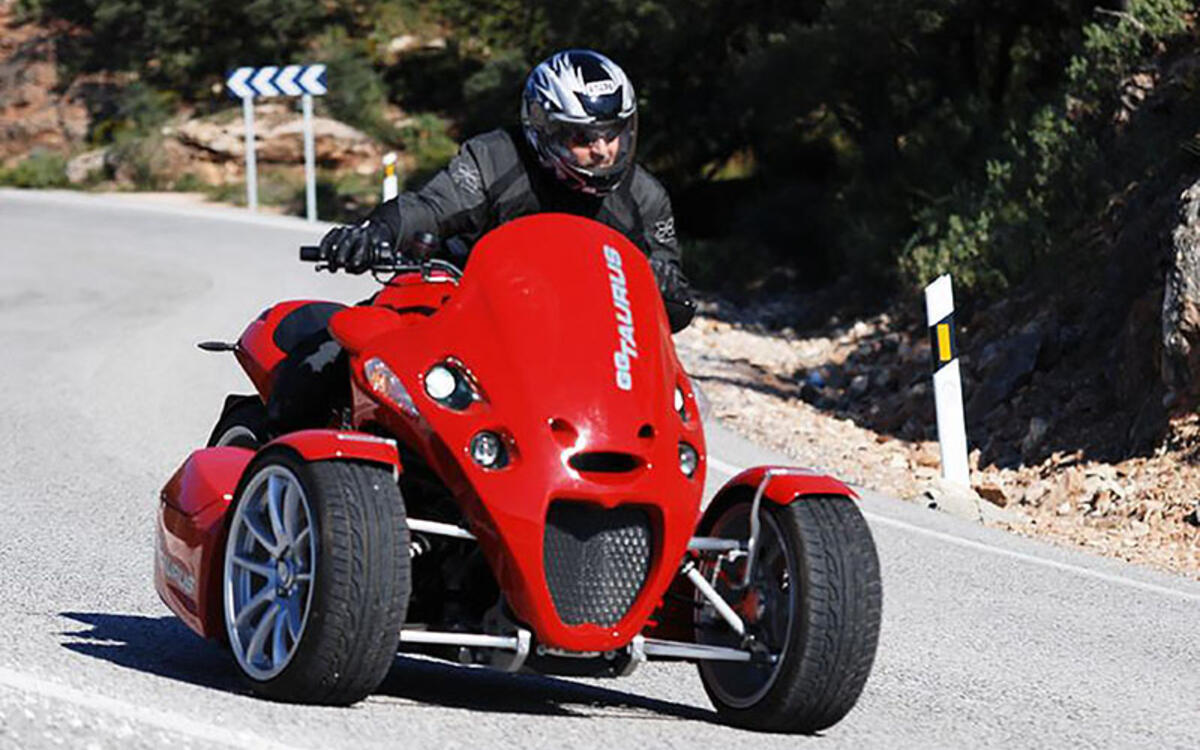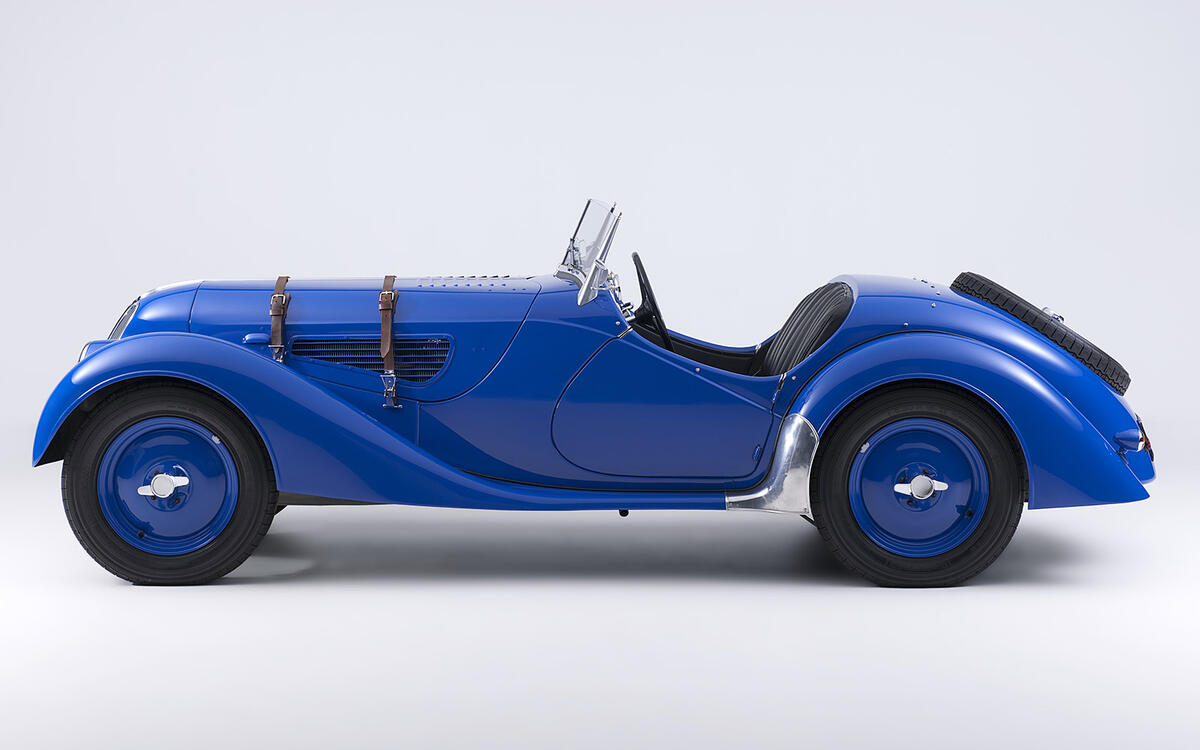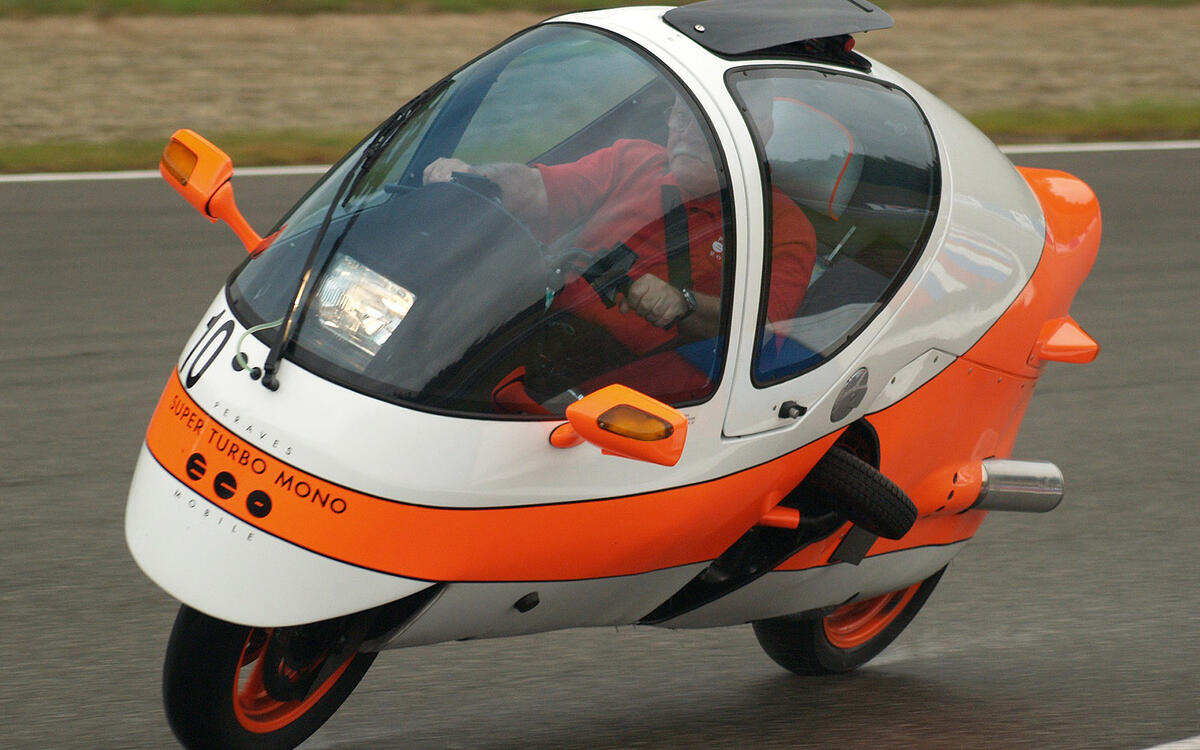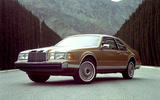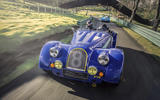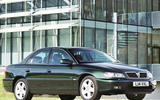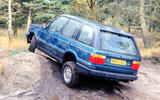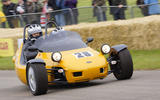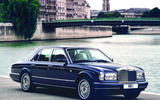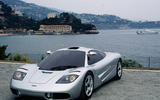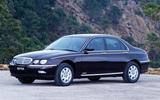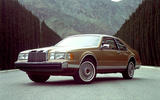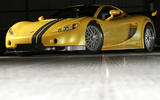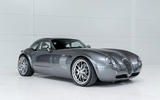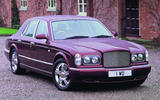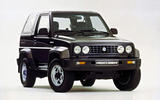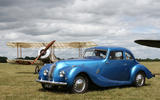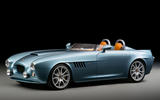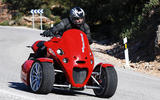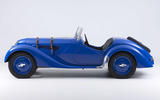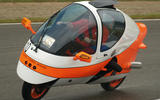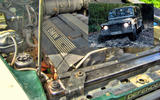 Slide of
Slide of
BMW is noted for making some of the most powerful and evocative engines for its own cars, yet they have also ended up powering plenty of other makes.
As well as supplying its motors to the likes of McLaren for the F1, there’s a whole spectrum of makes and models out there that owe their engine to German firm. Here’s our guide to the cars you might not realise have a BMW motor hidden inside.
 Slide of
Slide of
Morgan Plus 8
The original Morgan Plus 8 used a ex-Buick Rover V8 and, famously and infamously, BMW took over Rover in the 1990s, so it’s fitting the current Plus 8 is powered by a 4.8-litre unit from the German company. It produces 367bhp to take the British roadster from 0-62mph in 4.5 seconds and on to 155mph.
However, this is the last outing for this engine and Morgan is marking the occasion with the limited run Plus 8 50th Anniversary (pictured) to mark the model’s half century since its launch. More than 6000 Plus 8s have been made and these final 50 cost from £107,000 (US$150,000).
 Slide of
Slide of
Vauxhall/Opel Omega
If you’re going to take on the best in the executive class, you might as well use their engine. That was the thinking behind GM Europe borrowing BMW’s 2.5-litre turbodiesel straight-six when it launched the Omega in 1993 as a replacement for the Carlton and Senator ranges.
They needed a powerful, smooth diesel to appeal to the company car drivers who lusted after the BMW 5 Series but with a Vauxhall budget. A deal was struck and the Omega gained instant credibility, albeit with power pegged to 128bhp instead of the BMW’s full-house 141bhp.
 Slide of
Slide of
Range Rover P38A
Land Rover was the jewel in the crown that BMW wanted when it took over Rover. Some of that appeal was for the off-road technology that would make its way into the X5, but the lure of Range Rover was strong too for the Germans. In return, the second generation of the Brit 4x4, known as the P38A, finally gained a reasonably refined turbodiesel in place of the woefully sluggish VM motor used in the Classic.
Still far from the last word in performance, the P38A’s BMW-sourced 2.5-litre at least offered decent torque for mud-bashing and towing, and many have gone on to rack up impressively huge mileages.
 Slide of
Slide of
Grinnall Scorpion
Grinnall started out converting Triumph TR7s into Rover V8-powered machines, but that business had waned by the early 1990s. So, company founder Mark Grinnall made the bold decision to build a modern interpretation of the classic Morgan three-wheeler. With two wheels up front and a single at the back, power was provided by a BMW K-series motorcycle engine.
In the lightweight Scorpion, performance was rapid and over the years, the model has evolved with the latest BMW bike units to the current SIII 1300cc unit that offers 460bhp per tonne. Still going strong today, you can order three- and four-wheeled Scorpions.
 Slide of
Slide of
Rolls-Royce Silver Seraph
Out of the muddle of the Bentley/Rolls-Royce sell-off in 1998 to Volkswagen and BMW subsequent ownership of Rolls-Royce, the Silver Seraph deserved a better shot at sales success. Launched in 1998, it came with a 5.4-litre V12 engine lifted from BMW’s mighty 750i. It blessed the Seraph with 326bhp and could waft the sizeable saloon to 140mph in near silence.
The engine was entirely in keeping with the £155,000 (around US$200,000 at the time) Rolls’ massive technical leap forward from the previous Silver Spirit. However, it wasn’t enough to save the Seraph and the order book closed in 2001 after 1570 cars were made as BMW prepared to launch the Phantom replacement.
 Slide of
Slide of
McLaren F1
Perhaps the most famous recipient of a BMW engine transplant is also the least numerous, yet the McLaren F1 is rightly regarded for its power, performance and noise. Autocar was the only magazine ever to officially test the F1 and the figures are just as impressive now as then. Top speed was 231mph, later to rise to 243mph, and 0-60mph came up in 3.2 seconds.
British firm Ultima supplied two of its chassis as test beds for the F1, with chassis 13 used to develop the 627bhp 6064cc V12. McLaren hoped to sell 350 F1s, but in the end only 64 road cars were made plus 36 race cars and five road-going prototypes. All are now extremely valuable.
 Slide of
Slide of
Rover 75
So much has been said about the politics surrounding the Rover 75’s inception, launch in 1999 and Rover's collapse in 2005 that it’s easy to forget it was a good car. This is especially true when it was fitted with BMW’s M47 2.0-litre turbodiesel unit. It used common rail technology to increase power and efficiency, but it was the motor’s refinement that left the biggest impression on anyone who drove this car.
Near silent in normal running conditions, it made the 75 every inch the gentleman’s carriage it aimed to be and it only improved further when power was upped to 130bhp. There was also a long wheelbase version called Vanden Plas ideally suited to town mayors.
 Slide of
Slide of
Continental MkVII
The USA’s love affair with petrol stuttered in the 1980s when a fuel crisis took hold. Ford’s response was to hurriedly arrange to use BMW’s 2.4-litre turbodiesel engine in the Continental MkVII. A happy marriage this was not. Lincoln buyers expected a certain level of performance and refinement, and this engine delivered neither.
With a mere 114bhp, it took 13 seconds to get the hefty Continental from rest to 60mph and fuel economy was nothing to write home to Germany about at 30mpg. Unsurprisingly, the diesel-powered Lincoln found few buyers and was soon dropped.
 Slide of
Slide of
Ascari
British firm Ascari had considerable form with using BMW engines in its low-slung supercars. It kicked off with the Ecosse that used a 300bhp version of the 4.4-litre V8 from the 5 and 7 Series. This was then swapped for a 4.7-litre version breathed on by BMW tuning firm Hartge to produce 400bhp. Next up was the KZ1 with an M5-derived S62 5.0-litre V8 developed to give 520bhp for 0-60mph in 3.8 seconds and 201mph. A race version used a Judd-built engine and that gave birth to the A10 with power upped to 625bhp, but even that was not enough to pull the company back from commercial failure.
 Slide of
Slide of
Wiesmann
Wiesmann has a long association with BMW and has been using the larger firm’s engines since 1993. Mostly, the motors were the six-cylinder units from contemporary M3s, but they have also managed to squeeze in V8s and V10s to their compact coupe and roadster models, such as this GT MF4. The firm was liquidated in 2014, but it’s back in business again to launch a new model in 2018 using the V8 engine from the new M5.
 Slide of
Slide of
Bentley Arnage
The Bentley Arnage may have shared its platform and overall shape with its Rolls-Royce Silver Seraph cousin, but under the bonnet was a 4.4-litre V8 rather than the V12 in the Seraph. Called Green Label to hark back to the golden age of Bentley racers in the 1920s, the Arnage broke away from the old 6.75-litre V8 that had been deemed too inefficient to soldier on.
With 350bhp, the BMW V8 offered a hefty 420lb ft of torque to see the Arnage from 0-62mph in 6.5 seconds and on to 149mph. However, when Volkswagen took control of Bentley, the BMW engine was quickly dropped and replaced by the old-school V8.
 Slide of
Slide of
Bertone Freeclimber
Necessity is the mother of invention, so when Bertone found itself without much work in the late 1980s it decided to create the Freeclimber. Based on the Daihatsu Rocky, which morphed into the Fourtrak later on, the Italians recognised a better range of engines was needed and adopted BMW’s 2.0- and 2.7-litre six-cylinder petrols from the 5 Series. They also offered the 2.4-litre turbodiesel for those interested in exploiting the Freeclimber’s off-road ability when it was launched in 1989.
Costing half as much again as a Jeep Cherokee, few takers were found for the Bertone SUV and production lasted until 1992, when 2795 had been built.
 Slide of
Slide of
Bristol 400
Bristol Cars came about in the aftermath of World War II and used experience gained in the conflict to build a luxury sporting car using lightweight aluminium for the body. Under the skin, though, was the chassis of a pre-war BMW 326, while power came from BMW’s 328 motor.
That was a tough, reliable and punchy 2.0-litre six-cylinder unit. Most came with triple carburettors to make 85bhp and that was enough to push the 400 to just shy of 100mph. The engine was very advanced for the period, but it did require very regular attention to the valve clearances to maintain performance. As a result, Bristol lost out to more rugged rivals such as the Jaguar XK120.
 Slide of
Slide of
Bristol Project Pinnacle
To celebrate its 70th anniversary in 2015, Bristol Cars announced Project Pinnacle as a concept car. It made plenty of headlines, not least for its retro-inspired lines, but also because it would use a 4.8-litre BMW V8 engine as a nod to the power plant used in the very first Bristol model, the 400. There was sound reasoning for choosing a V8 as more recent models from this most British of car makers actually used big bore American muscle.
The BMW unit, however, fits more comfortably with the firm’s aero heritage by being lightweight. You can now order the production version, called Bullet.
 Slide of
Slide of
GG Taurus
Switzerland isn’t noted for its domestic automotive design, so Walter Grüter’s GG Taurus is quite an anomaly. It came about when he designed a BMW motorcycle-based sidecar outfit that attracted the attention of BMW in his home country. They needed a design for a Swiss Army motorcycle and the result was the GG Taurus.
An initial run of 600 were made for military use and Grüter went on to offer them to the public, so you can treat yourself to one with a 175bhp 1.3-litre motor and top speed of 137mph.
 Slide of
Slide of
Frazer Nash
Not so much a BMW-engined car, these pre-war machines were more rebadged BMWs to the point where they were sold as Frazer Nash-BMWs. This meant you could buy 315, 319 and 328 sports models in the UK but with the pretence of buying British. BMW was sufficiently happy with the arrangement to appoint Frazer Nash its UK importer.
After World War II, the BMW connection continued as Frazer Nash cars used the BMW-derived engine from Bristol. However, the curtain was closing on this era and the firm moved on to become Porsche’s main agent in Britain.
 Slide of
Slide of
Peraves Ecomobile
The Ecomobile may seem unconventional, but its design is rooted in functionality. It aimed to be the most efficient way to carry two people plus luggage on the autobahn at up to 150mph. To achieve this, its styling is similar to a fighter jet’s canopy, while power has always come from BMW motorcycle engines. The first 89 Swiss-built Ecomobiles used a K100 four-cylinder 1.0-litre unit, along with the bike’s front suspension, steering and instruments.
Production ended in 2005, but was picked up again in 2009 by Gustav Prochazka and moved to the Czech Republic. Power still comes from the BMW motorcycle range, but the company is also developing an electric version.
 Slide of
Slide of
Land Rover Defender 2.8i
This is the Land Rover Defender you almost certainly have not heard of. By 1997, the venerable Rover V8 was no longer offered to South African customers but they still wanted a smooth petrol engine as an alternative to the 300Tdi turbodiesel. The solution was to shoehorn in Land Rover then-parent company’s M52 2.8-litre six-cylinder motor as used in the 3, 5 and 7 Series.
With 192bhp and 207lb ft of torque, it turned the Defender into something quick zippy. So much so, Land Rover later restricted this model to a top speed of 100mph. All 1395 examples were built at Land Rover’s Rosslyn factory in Pretoria and are highly prized by Defender enthusiasts now.
They sure got around...
Advertisement


